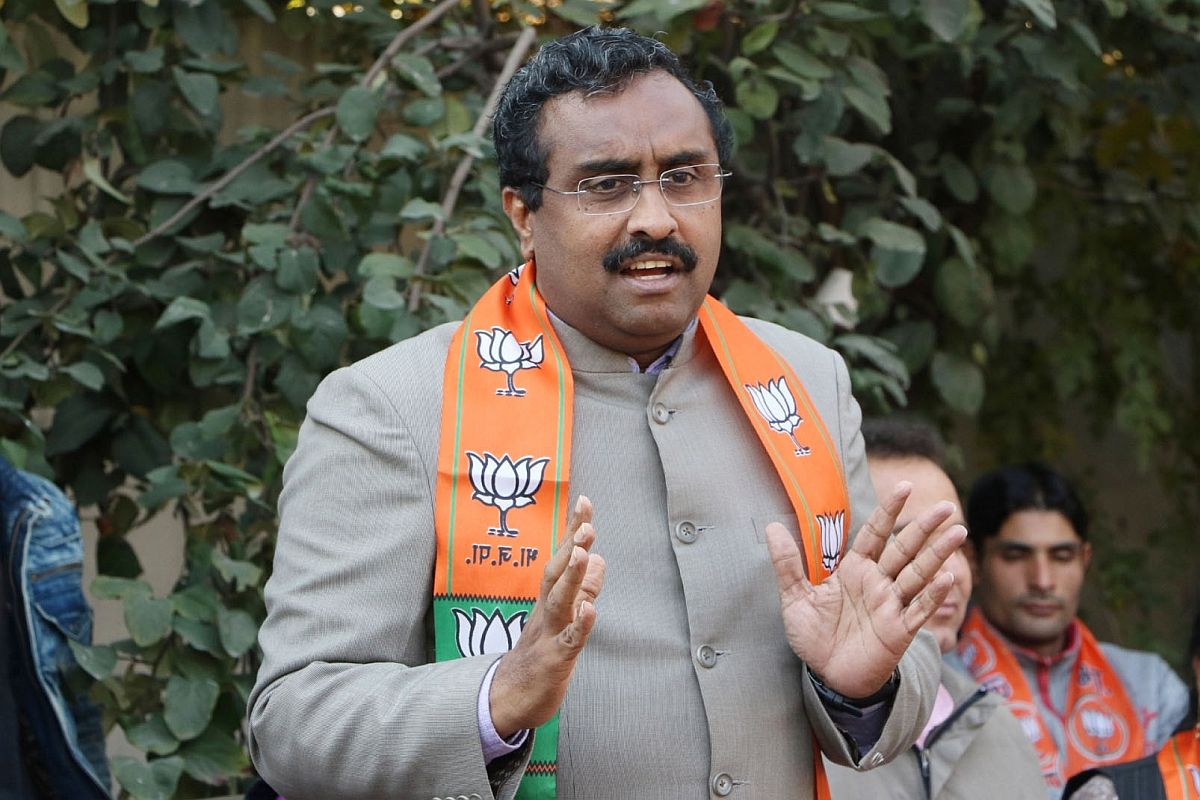In a significant statement, BJP General Secretary Ram Madhav reiterated India’s claim to Aksai Chin as its own, amid rising tensions between Delhi and Beijing.
He said on Wednesday that India must show the same assertiveness on the Line of Actual Control (LAC) with China as it has shown on the Line of Control (LoC) with Pakistan, simply to protect its “self respect” and defend its land “till the last inch”.
Advertisement
Madhav said the solution to the present standoff is actively engaging with China both diplomatically and militarily. The BJP leader was speaking at an event on the India-China border issue organised by RSS mouthpiece ‘Organiser’.
“Our claim is not just the LAC. Our claim goes beyond that. When it comes to J-K, it includes PoK and when it comes to the UT of Ladakh, it includes Gilgit-Baltistan and Aksai Chin,” asserted Ram Madhav, who is often seen as the BJP’s face when it comes to foreign relations.
However, Madhav stressed India does not want to wage a war with China. But India’s assertiveness on its side of the LAC is required to “protect its self respect”. Madhav added that India will have to defend its land till the last inch.
He also accepted that China as we see today is more aggressive. But he claimed that an aggressive China today is the result of an “assertive India”.
The BJP General Secretary claimed that China by nature never wanted to settle a border dispute. That was the reason it refused to insert the word “existing” in a mutual agreement when PV Narasimha Rao was Prime Minister.
Madhav also blamed the rising Chinese aggression on past political responses. “We wanted peace every time,” said the BJP leader. He listed that be it Rajiv Gandhi in 1988, Narasimha Rao in 1993 or Deve Gowda or UPA government, “all tried to make peace with China only to be betrayed by the dragon.”
The senior BJP leader said the solution is to engage with China diplomatically while being militarily assertive to defend India’s land. “India will take a firm position on ground. We will fight for our self respect,” he remarked. Madhav also took potshots at the Congress party to suggest it has been undoing efforts by Prime Minister Narendra Modi vis-a-vis China.
This strong assertion comes in the wake of 20 Indian Army men, including an officer, being killed on the night of June 15 during a violent face-off with Chinese People’s Liberation Army troops at Galwan valley in eastern Ladakh. These are the first casualties faced by the Indian Army in a clash with the Chinese PLA since 1975 when an Indian patrol was ambushed by Chinese troops in Arunachal Pradesh.
Earlier on Wednesday, Arunachal Pradesh Chief Minister Pema Khandu had termed LAC as the “Indo-Tibet border”.
Posting pictures of an Army event in the state, Khandu tweeted, “The valour of Indian Army is what we counted ever since our Independence. Had an opportunity to interact with the brave jawans today at Bumla post on the Indo-Tibet border. Their josh (excitement) is at the highest level. We are in safe hands when it comes to our borders.”
The statement assumes significance as China has been in occupation of the autonomous region of Tibet, an area of around 2.5 million sq km, since 1951 and the Tibetan government has been in exile in India.
New Delhi refers its border with Tibet in Arunachal Pradesh as the LAC.
China disputes India’s sovereignty over Arunachal Pradesh, which has an area of around 84,000 sq km and population of around 1.5 million. India’s boundaries were defined by the British before Independence. But China occupied Aksai Chin in Jammu and Kashmir and raised dispute over the boundary of Arunachal Pradesh in the 1962 war with India.
Around 1,00,000 Tibetans (73 per cent of all Tibetans), including the Dalai Lama, their spiritual leader, are in exile in India.
(With inputs from IANS)











